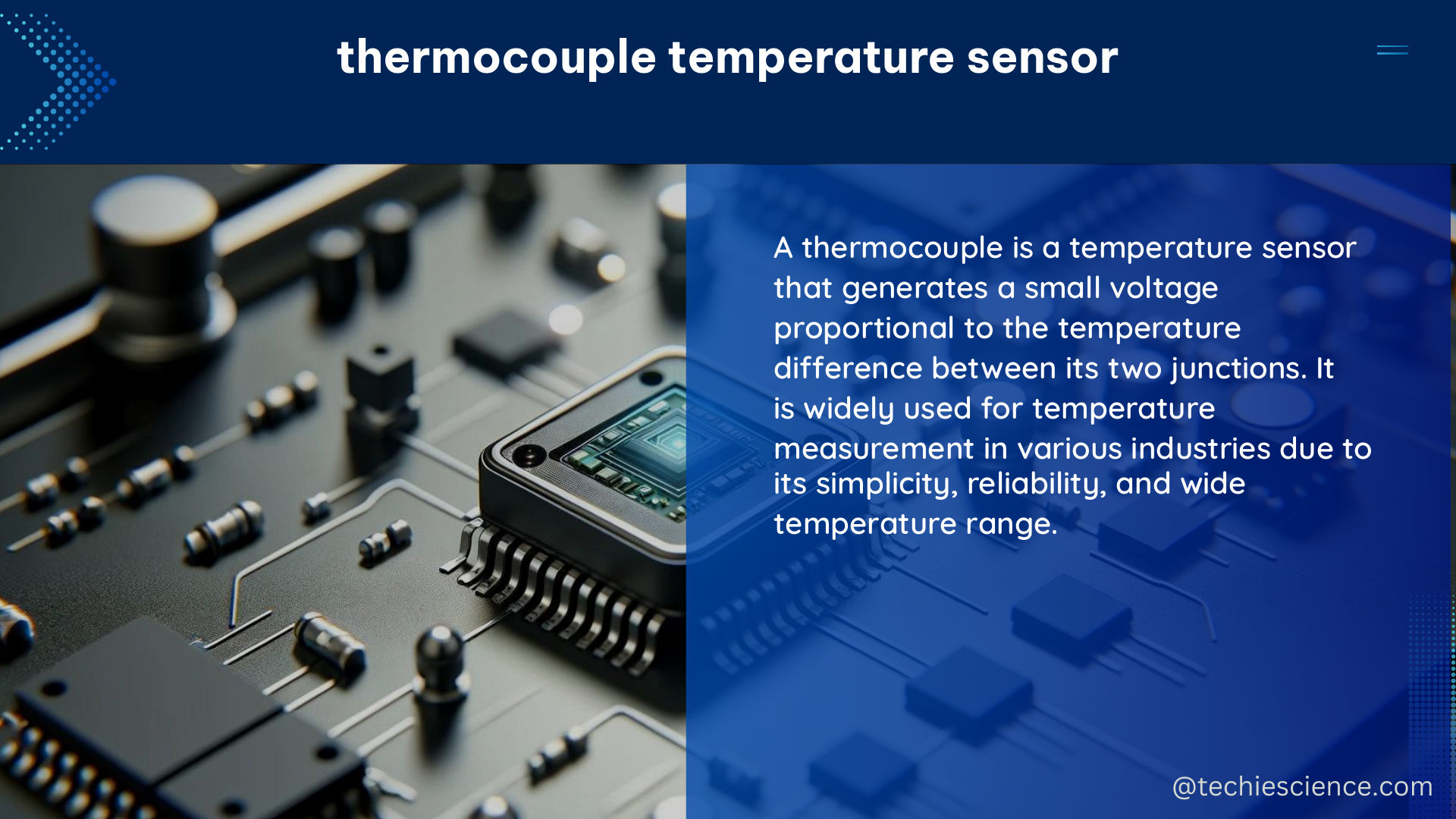Thermocouples are versatile temperature sensors that generate a voltage proportional to the temperature difference between two junctions. They are widely used in various industries, from manufacturing to research, due to their simplicity, reliability, and cost-effectiveness. This comprehensive guide will delve into the technical specifications, working principles, and step-by-step instructions for building a DIY thermocouple temperature sensor.
Understanding Thermocouple Temperature Sensors
Thermocouples are composed of two dissimilar metal wires, such as iron and copper-nickel (K-type), that are joined at one end to form the measurement junction. When this junction is exposed to a temperature difference, a small voltage is generated, which is linearly proportional to the temperature difference between the measurement and reference junctions.
Technical Specifications
- Temperature Range: Thermocouples are available in various types, each with a specific temperature range. For example, a K-type thermocouple has a temperature range of -200°C to 1260°C, making it suitable for a wide range of applications.
- Output Voltage: The voltage generated by a thermocouple is typically in the range of a few millivolts (mV) per degree Celsius (°C) of temperature difference between the measurement and reference junctions. The exact voltage-temperature relationship is well-defined for each thermocouple type.
- Accuracy: The accuracy of a thermocouple depends on several factors, including the quality of the wire material, the uniformity of the thermocouple construction, the stability of the reference junction temperature, and the accuracy of the voltage measurement. For precise temperature measurement, individual calibration of the thermocouples is recommended.
- Wire Material: Thermocouples are made from dissimilar metal wires, such as iron and copper-nickel (K-type), chromel and alumel (K-type), or platinum and rhodium (R-type).
- Junction Type: The measurement junction can be formed by soldering, brazing, or welding the ends of the thermocouple wires together, as long as there is no net temperature gradient along the third metal in the junction.
- Reference Junction Compensation: To obtain an accurate absolute temperature reading, the reference junction temperature must be known and compensated for, typically using a separate temperature-sensitive device, such as a semiconductor sensor, thermistor, or platinum resistance temperature detector.
Building a DIY Thermocouple Temperature Sensor

To build a DIY thermocouple temperature sensor, you will need the following materials and tools:
- Thermocouple wire (e.g., K-type)
- Soldering iron and solder
- Wire stripper
- Multimeter
- Voltage meter or data acquisition system
- Cold junction compensation device (e.g., thermistor or semiconductor sensor)
Step 1: Prepare the Thermocouple Wire
- Measure and cut the thermocouple wire to the desired length, ensuring that the wires are long enough to reach the voltage meter or data acquisition system.
- Strip the insulation from the ends of the thermocouple wires, exposing the bare metal.
- Twist or weld the stripped ends of the thermocouple wires together to form the measurement junction.
Step 2: Connect the Thermocouple Wire to the Voltage Meter
- Connect the ends of the thermocouple wires to the terminals of the voltage meter or data acquisition system, creating two new “secondary” junctions in the circuit.
- Ensure that the connections are secure and that the wires are not touching any other conductive materials, which could introduce additional thermal gradients and affect the voltage output.
Step 3: Connect the Cold Junction Compensation Device
- Connect the cold junction compensation device (e.g., thermistor or semiconductor sensor) to the voltage meter or data acquisition system.
- Place the cold junction compensation device in close proximity to the reference junction (the connections between the thermocouple wires and the voltage meter) to ensure that it accurately measures the reference junction temperature.
Step 4: Calibrate the Thermocouple
- Calibrate the thermocouple by comparing its output voltage to a known temperature source, such as a temperature-controlled bath or block.
- Adjust the voltage-to-temperature conversion factor (known as the Seebeck coefficient) to match the known temperature of the calibration source.
Step 5: Measure the Temperature
- Apply the thermocouple to the temperature source you want to measure.
- Record the voltage output from the thermocouple.
- Convert the voltage output to temperature using the voltage-temperature relationship for the specific thermocouple type, taking into account the reference junction compensation.
By following these steps, you can build a DIY thermocouple temperature sensor that can accurately measure temperatures within the specified range of the thermocouple type you have chosen.
Conclusion
Thermocouple temperature sensors are versatile and widely used in various industries due to their simplicity, reliability, and cost-effectiveness. This comprehensive guide has provided you with the technical specifications, working principles, and step-by-step instructions for building a DIY thermocouple temperature sensor. With the right materials and tools, you can now create your own customized temperature measurement solution tailored to your specific needs.
References
- Practical Guidelines for Temperature Measurement, Omega Engineering, https://www.omega.nl/temperature/Z/PracticalGuidelinesforTemperatureMeasurement.html
- Modified Thermocouple Sensor and External Reference Junction, NCBI, https://www.ncbi.nlm.nih.gov/pmc/articles/PMC8512746/
- How Does a Thermocouple Work?, Ashcroft, https://blog.ashcroft.com/how-thermocouples-work
- Thermocouple Temperature, ScienceDirect, https://www.sciencedirect.com/topics/engineering/thermocouple-temperature
- ADS1220 thermocouple measuring, TI E2E, https://e2e.ti.com/support/data-converters-group/data-converters/f/data-converters-forum/432533/ads1220-thermocouple-measuring

The lambdageeks.com Core SME Team is a group of experienced subject matter experts from diverse scientific and technical fields including Physics, Chemistry, Technology,Electronics & Electrical Engineering, Automotive, Mechanical Engineering. Our team collaborates to create high-quality, well-researched articles on a wide range of science and technology topics for the lambdageeks.com website.
All Our Senior SME are having more than 7 Years of experience in the respective fields . They are either Working Industry Professionals or assocaited With different Universities. Refer Our Authors Page to get to know About our Core SMEs.